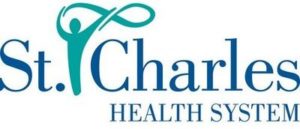
Jump To:
A person with locked-in syndrome can see, hear, think clearly, recognize faces, and understand everything that is going on around him or her. But aside from the muscles controlling the eyes, he or she cannot move a single body part, nor can he or she speak or even breathe without assistance.
Locked-in syndrome is one of the most severe forms of paralysis that exists. It is beyond quadriplegia, as a typical quadriplegic can still speak and move facial muscles. Patients with locked-in syndrome score surprisingly high on quality of life studies despite the severe and almost total limitations posed by the condition.
Still, the condition is devastating, and if it resulted from medical negligence, you could have grounds for a malpractice lawsuit. An attorney from Newsome | Melton can help. Call 888-261-5614 for a free consultation.
How Locked-In Syndrome Happens
Locked-in syndrome happens when a part of the brain stem called the pons suffers damage. The pons is critical to muscle movement because it relays nerve signals between the brain and the spinal cord. Any muscle movement you make, from flexing your bicep to bending down to tie your shoe, starts in the brain. Via nerve passageways, your brain sends a signal to your muscles to do what you want them to do. The pons is an essential part of this passageway.
When the pons gets damaged, your brain can still try to send signals to your muscles, but your muscles will not receive them. Therefore, paralysis results. A person with locked-in syndrome retains full cognitive function and can think about walking or moving various body parts. But those thoughts or impulses never get relayed to the actual muscle fibers.
What Happens When a Person Develops Locked-In Syndrome
People who develop locked-in syndrome lose all voluntary muscle movement except in the muscles that control the eyes. They can still open and close their eyes, blink, and look in different directions. Apart from eyesight, the only other of the five senses they retain is hearing. They can listen to what you say and, because they also keep their cognitive function, they can understand it. But without the ability to speak or even make facial gestures, they have trouble conveying that they hear and follow you.
Something else people with locked-in syndrome can do normally is sleep. Their sleep/wake cycles are no different from those of a person with full mobility. But they need assistance with all daily living activities and almost always require a device installed via tracheotomy to breathe on their own.
Why Do People Develop Locked-In Syndrome
Several factors can lead to locked-in syndrome. Some of these occur naturally and are beyond anyone’s control. Other causes may result from medical errors and negligence. If your loved one developed locked-in syndrome after having surgery or receiving medical care, you should consider speaking with a lawyer who can investigate what happened and determine if you have grounds for a malpractice lawsuit.
Lack of oxygen to the brain and bleeding in the brain are two of the most common causes of locked-in syndrome. They can occur due to a stroke, blood clot, infection, or something else. In rare cases, traumatic brain injury can damage the pons and lead to locked-in syndrome. Other cases have arisen from infections as well as from chronic conditions, such as ALS (Lou Gehrig’s disease).
Treating Locked-In Syndrome
Most patients with locked-in syndrome never recover any muscle movement, let alone enough to make a difference in their lifestyle. The most effective treatment, therefore, is focused not on getting better but on adapting to the condition and enjoying a meaningful life despite the physical limitations of locked-in syndrome.
One of the most effective ways people with locked-in syndrome can improve their quality of life is to establish a communication system that lets them interact with loved ones. The patient can learn to move their eyes in different patterns to convey his or her thoughts or opinions.
It takes a lot of time and effort to learn to communicate this way extensively. Think of it as like learning a new language. It is thus essential for loved ones to be patient during the process.
If your loved one developed locked-in syndrome because of medical negligence, a lawyer from Newsome | Melton can help you recover damages from the responsible party or parties. We offer a free case evaluation and are eager to speak with you.
Brain Injury - News Articles

After nine months of waiting, Angela Marchant went into labor on July 22, 2016. She was rushed into the St. Charles Family Birthing Center, located in Bend, Oregon. The center is operated by the St. Charles Health System, which is one of the largest providers of medical care in the state of Oregon. According to
Read More
After a four-week trial, a New Jersey jury in Gloucester County found that the negligence of two emergency room doctors led to the continued abuse of an infant, who suffered permanent brain damage as a result. The jury awarded the child’s mother $45 million in damages because the doctors failed to diagnose the child’s broken
Read More